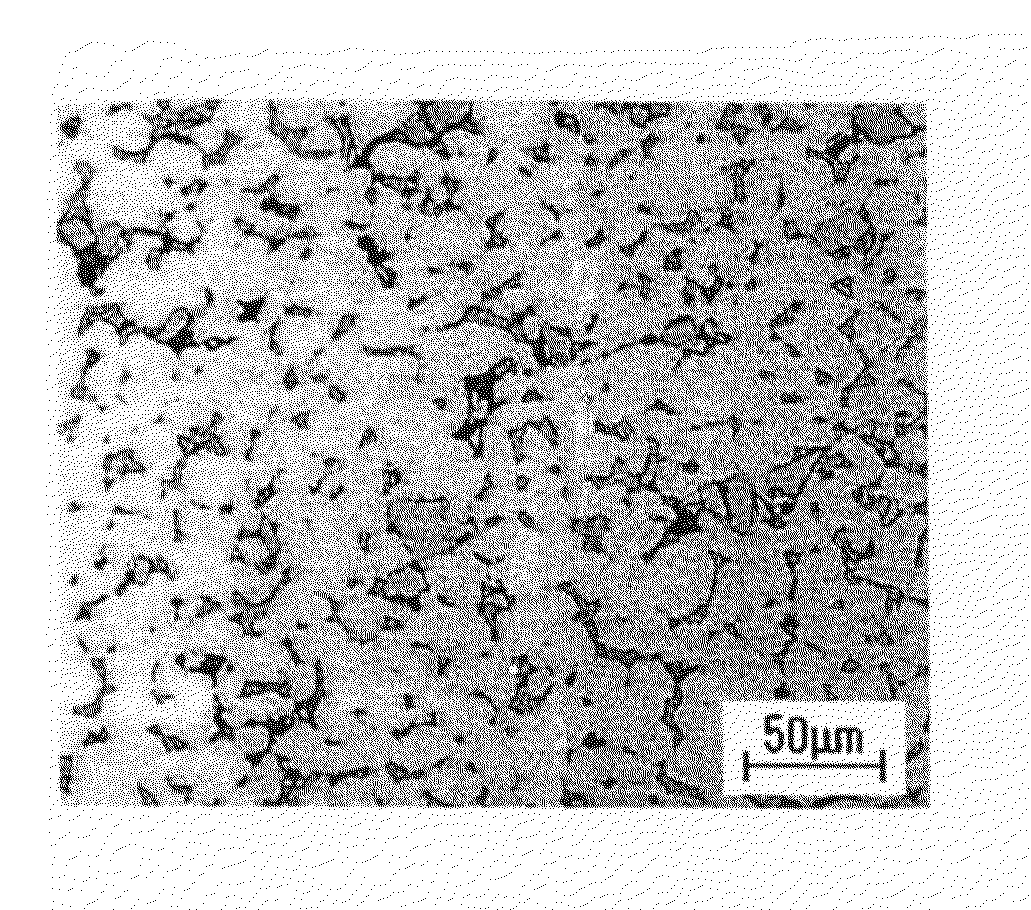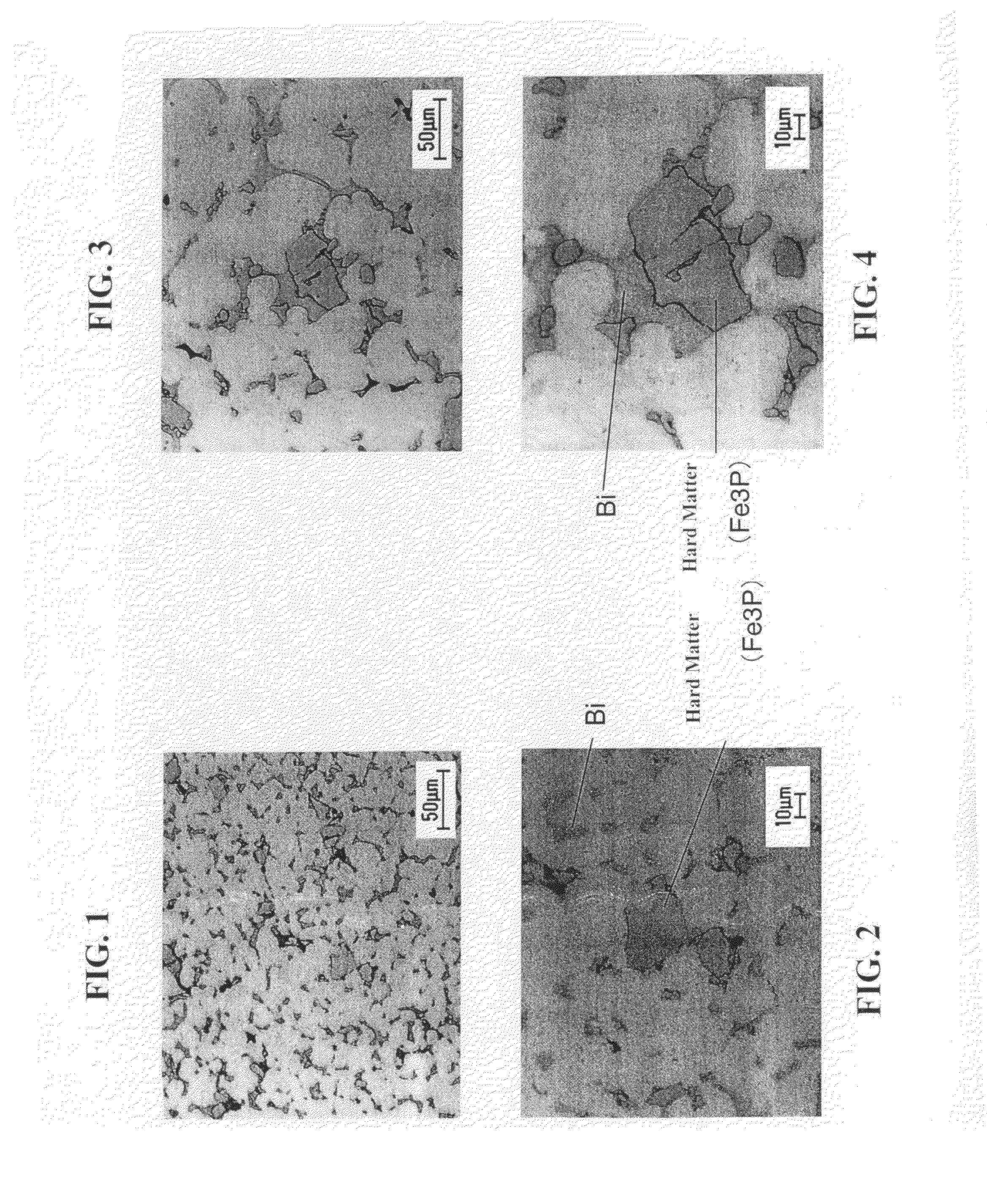Pb-free copper-alloy sliding material
a sliding material and copper alloy technology, applied in the direction of rolling resistance optimization, mechanical equipment, rotary machine parts, etc., can solve the problem that pb is liable to be corroded by acids other than sulfuric acid
- Summary
- Abstract
- Description
- Claims
- Application Information
AI Technical Summary
Benefits of technology
Problems solved by technology
Method used
Image
Examples
Embodiment Construction
[0036]The Cu—Bi pre-alloy powder having a composition shown in Table 1 (the particle diameter-150 μm or less, the atomized powder) and the hard-particle powder (the average particle-diameter shown in Table 1) were mixed and sprayed on a steel sheet to a thickness of approximately 1 mm. The preliminary sintering was carried out in hydrogen reducing protective atmosphere at 750-1000° C. for 20-1800 seconds of the sintering time. Subsequently, the rolling and then the secondary sintering under the same conditions as the primary sintering were carried out, thereby obtaining the sintered products. These products were used as the test samples. The sintering condition for a long period of time within the sintering-time range was intended to promote the diffusion of the Bi phase and hence to prepare the comparative samples outside the present invention.
Testing Method of Seizure Resistance
[0037]The surface of the copper alloy prepared by the above described method was lapped by paper to prov...
PUM
| Property | Measurement | Unit |
|---|---|---|
| particle diameter | aaaaa | aaaaa |
| particle-diameter | aaaaa | aaaaa |
| particle-diameter | aaaaa | aaaaa |
Abstract
Description
Claims
Application Information
 Login to View More
Login to View More - R&D
- Intellectual Property
- Life Sciences
- Materials
- Tech Scout
- Unparalleled Data Quality
- Higher Quality Content
- 60% Fewer Hallucinations
Browse by: Latest US Patents, China's latest patents, Technical Efficacy Thesaurus, Application Domain, Technology Topic, Popular Technical Reports.
© 2025 PatSnap. All rights reserved.Legal|Privacy policy|Modern Slavery Act Transparency Statement|Sitemap|About US| Contact US: help@patsnap.com


